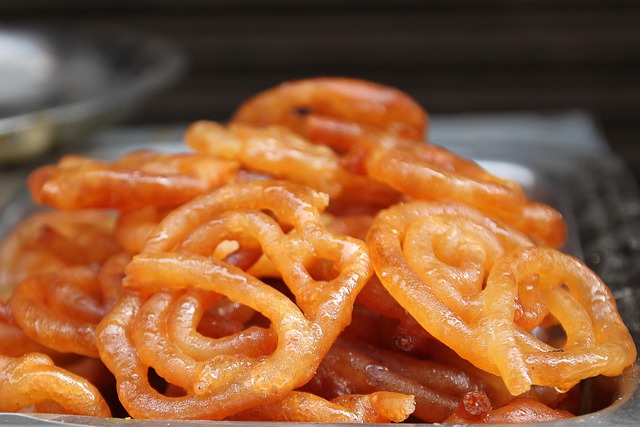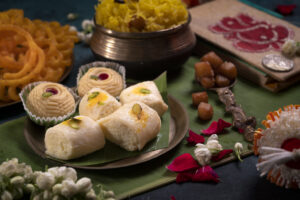Delicious Authentic Indian Jalebi Recipe – Celebrate with Sweetness
Cuisine: Indian
Jalebi is a sweet and crispy Indian dessert that is deep-fried and then soaked in sugar syrup. It’s enjoyed during celebrations, festivals, and as a delightful treat any day of the week. Jalebi hails from the rich culinary heritage of India, often found in sweet shops and street stalls, embodying the spirit of Indian festivities.
Table of Contents
ToggleThis dish has various regional variations, including Imarti, which is similar but made from urad dal, or Karnataka’s Maavinakayi Jalebi, which incorporates mango flavor. There’s also the Bengali version known as Fawda that uses all-purpose flour and is usually thicker. But today, we will focus on the most popular and traditional method of making Jalebi, ensuring a crispy exterior and a luscious syrupy center that melts in your mouth.
Ingredients for Mouthwatering Jalebi
| All-purpose flour | 1 cup |
| Yogurt | 2 tablespoons |
| Water | 3/4 cup (adjust as needed) |
| Turmeric powder | 1/4 teaspoon |
| Salt | 1/4 teaspoon |
| Sugar | 1.5 cups |
| Saffron strands | 1 pinch |
| Ghee or oil for frying | As needed |
How to Prepare Jalebi
Making Jalebi is an art that involves patience and practice, but the end result is utterly rewarding. Below is a step-by-step guide to help you through the process of creating this delightful dessert.
- In a mixing bowl, combine all-purpose flour, yogurt, turmeric powder, and salt. Gradually add water to create a smooth batter. It should be of pouring consistency.
- Allow the batter to ferment for about 12 hours or overnight for best results.
- Once fermented, prepare sugar syrup by boiling sugar and water in a pan, adding saffron strands for color and flavor.
- Heat ghee or oil in a deep pan for frying.
- Pour the batter into a piping bag with a small nozzle. Squeeze the batter into the hot oil in circular shapes or figure-eight patterns.
- Fry until they turn golden and crisp, then immediately dip in hot sugar syrup for a few seconds.
- Remove and place them on a cooling rack or plate. Repeat the process until the batter is used up.
Nutritional Information per Serving
| Calories | 450 |
| Carbohydrates | 65g |
| Protein | 5g |
| Fat | 20g |
| Sugar | 40g |
| Fiber | 2g |
When and How to Serve
Jalebi is best enjoyed fresh and warm, making it an ideal sweet for kids after school, or as a delightful addition to any festive gathering. It pairs wonderfully with unsweetened yogurt or a cup of hot tea for an adult treat. Whether served at a wedding, during Diwali celebrations, or simply as a sweet indulgence at home, Jalebi always brings a smile to the face.
Cultural Significance and Folklore
Jalebi has a rich history and is deeply rooted in Indian culture. It is often prepared during festive occasions such as Diwali and Holi, symbolizing joy and celebration. In many families, preparing Jalebi is a cherished tradition, passed down through generations.
Interestingly, Jalebi is not just limited to India; it has found a place in various culinary traditions across the world. In the Middle East, a similar dessert known as Zalabia is popular. The art of making Jalebi can also be a business venture, considering its lasting popularity. However, competition exists with established brands and local sweet shops that offer their unique takes on this classic treat. For aspiring entrepreneurs, keeping quality and authenticity in focus while innovating on flavors could create a niche in the market.
The potential to begin a brand around Jalebi does present its challenges; maintaining consistency while sourcing the right ingredients can be a hassle, not to mention the physical demand of frying up batch after batch. However, with proper marketing strategies emphasizing the homemade aspect and the culture behind Jalebi, success is very possible in the ever-growing market of Indian sweets.





